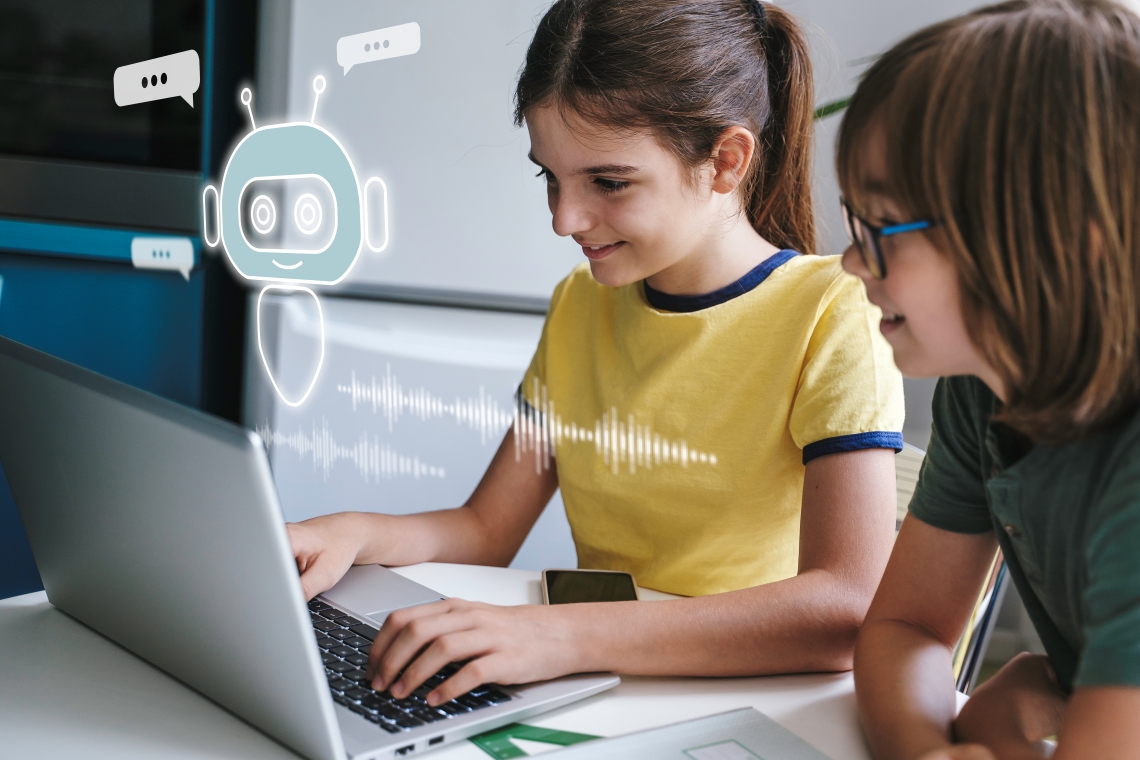
Registration Opens for SAF 2025: International STEAM Azerbaijan Festival Welcomes Global Youth
The International STEAM Azerbaijan Festival (SAF) has officially opened registration for its 2025 edition!

Estonia is preparing to make a significant shift in its education system by embedding artificial intelligence (AI) into classrooms nationwide, under a national initiative called AI Leap 2025.
From September 2025, the first phase of AI Leap will launch across Estonian high schools for a testing period. Under the program, around 20,000 students in 10th and 11th grades will receive access to AI-based educational applications, while approximately 3,000 teachers will undergo structured training to learn how to integrate these tools into daily teaching practices. Over time, the project will expand to vocational schools and new high school students, eventually involving 58,000 students and 5,000 teachers by spring 2027.
The main aim of the program is to support students’ learning without giving them direct answers. The exact design of this system is still being finalized as technical and practical tests of both Gemini and ChatGPT are taking place to evaluate their suitability for Estonia’s national curriculum. According to the project's executive director, Ivo Visak, the decision on which platform will be rolled out nationwide will be made in August 2025, with factors such as technical reliability, administrative ease, and cost influencing the final choice. However, Visak noted that Estonia might opt for a hybrid solution involving both platforms or even additional AI tools over time.
The program was officially initiated by Estonian President Alar Karis, with leadership from the Ministry of Education. AI Leap 2025 builds on Estonia’s earlier success with the Tiger Leap project in the 1990s, which made internet access and computers available to every school in the country. Now, with AI Leap 2025, Estonia’s objective is to teach students to use AI critically, thoughtfully, and equitably.
While 70-80% of Estonian high school students have already been exposed to AI tools like ChatGPT, not all have equal access or skills to benefit from them effectively. AI Leap 2025 aims to close this digital skills gap and prevent AI from becoming a source of educational inequality.
To ensure meaningful integration, the Estonian Ministry plans to share its national curriculum data with OpenAI. This ensures that the AI systems powering the educational applications will align with Estonia’s educational objectives. The national curriculum outlines the expected learning outcomes for each subject, which will help AI tools deliver support that is both relevant and accurate. However, textbook content will not be shared due to copyright concerns.
Instead, teachers themselves will provide the educational materials that AI tools will use in practice. This will allow educators to remain in control of content and ensure AI applications act as extensions of the teacher’s work, not independent sources of information. As Saadjärv explained, AI tools won’t deliver ready-made answers. Rather, they’ll function on a guided discovery learning model, prompting students to share their prior knowledge, reflect on concepts, and receive constructive feedback. For example, AI could help students learn scientific principles at home, then return to class for discussion and deeper exploration with their teacher.
To prepare teachers for this transition, Estonia will begin training sessions this summer. Starting on August 21, a two-day workshop will introduce teachers to AI tools and strategies for classroom use. This will be followed by online courses on platforms like Moodle, monthly virtual training sessions, and the formation of teacher learning groups within schools.
Share

Registration Opens for SAF 2025: International STEAM Azerbaijan Festival Welcomes Global Youth
The International STEAM Azerbaijan Festival (SAF) has officially opened registration for its 2025 edition!

Join the Edu-live Internship Program!
Are you passionate about journalism, education, science, as well as global study and development opportunities? Do you want to be part of a dynamic media platform that brings educational and scientific news and stories to life from around the world?

Yer yürəsinin daxili nüvəsində struktur dəyişiklikləri aşkar edilib
bu nəzəriyyənin doğru olmadığı məlum olub. Seismik dalğalar vasitəsilə aparılan tədqiqatda daxili nüvənin səthindəki dəyişikliklərə dair qeyri-adi məlumatlar əldə edilib.

Young Leaders Union Conference 2025 in Paris (Fully Funded)
Join Global Changemakers in Paris! Fully Funded International Conference for Students, Professionals, and Social Leaders from All Nationalities and Fields

An mRNA cancer vaccine may offer long-term protection
A small clinical trial suggests the treatment could help keep pancreatic cancer from returning

Lester B Pearson Scholarship 2026 in Canada (Fully Funded)
Applications are now open for the Lester B Pearson Scholarship 2026 at the University of Toronto!